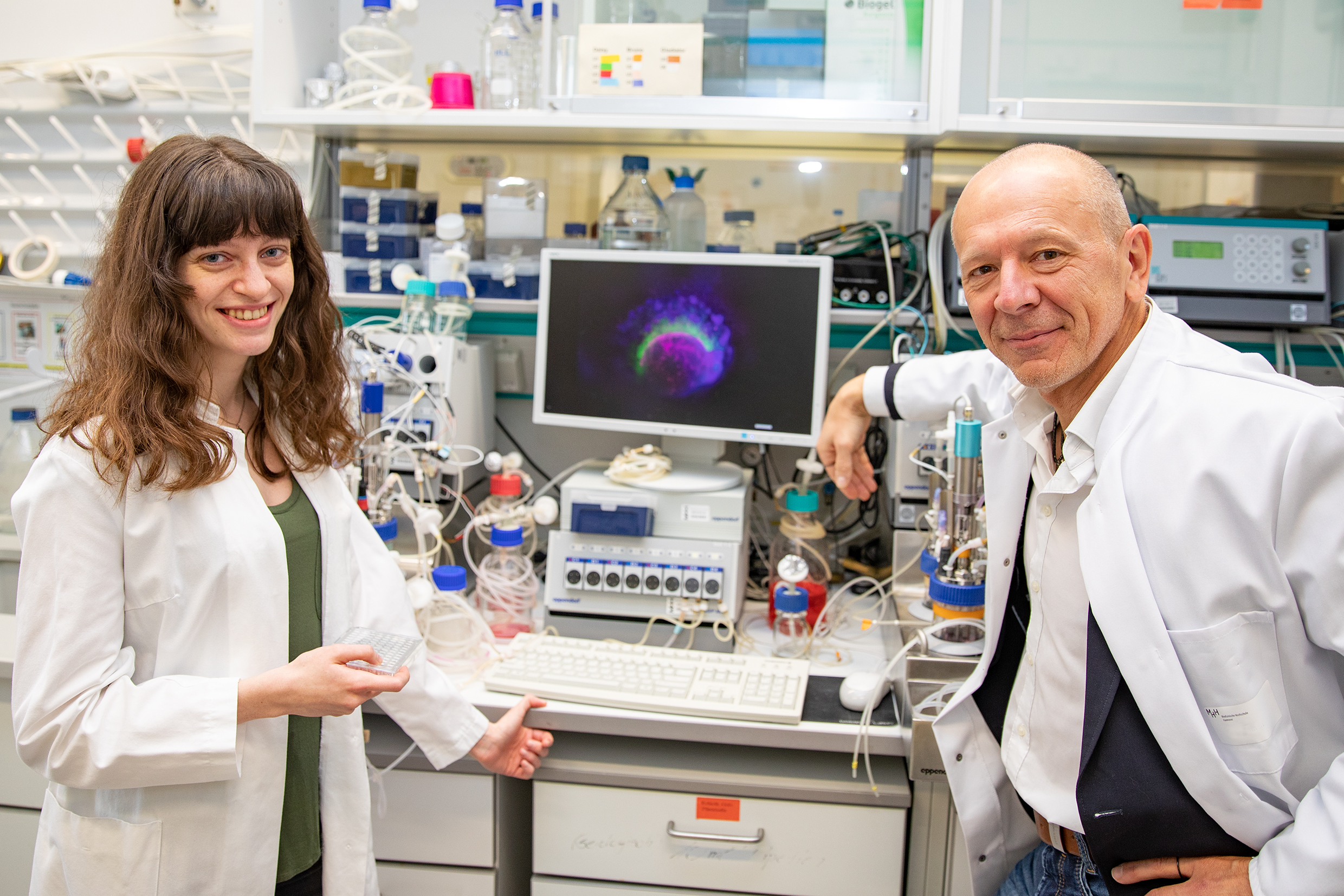Human heart-forming organoids recapitulate early heart and foregut development
For the first time, MHH research group can use human stem cells to simulate early heart development in the cell culture dish

Scientists use so-called human pluripotent stem cells (hPSC) to study the early stages of embryonic development in the cell culture dish. These are cells with special properties that can be reproduced indefinitely and are able to develop any cell type. With the help of biological or chemical signals, the hPSC can be controlled, for example, so that they only produce pure heart muscle cells. These can then grow together to form a tissue - an important tool for the development of new therapies, for example to repair damaged hearts with the help of regenerative medicine. How the many different cell types develop step by step during heart development and how they form complex organ structures through self-organization had not yet been reproduced in the cell culture dish. Our research team headed by Dr. Robert Zweigerdt, cell biologist at the Leibniz Research Laboratories for Biotechnology and Artificial Organs (LEBAO) at the Hannover Medical School (MHH), succeeded in tracing the entire path to the early stages of a human heart in cell culture for the first time. The research work is published in the renowned journal Nature Biotechnology.
Heart organoids also contain attachments for blood vessels, liver and lungs
"We let the hPSC grow into three-dimensional cell aggregates in a hydrogel made of proteins and observed the controlled development in so-called heart organoids," says Dr. Lika Drakhlis, first author of the study. In order for the cells to develop an early heart stage at all, the scientists had to develop a new differentiation protocol. These special experiment instructions with exact specifications for the rearing of the organoids, which consist of at least seven different, clearly structured cell and tissue types, did not exist for the heart until then. By combining numerous microscopic and molecular methods, the scientists were then able to show that the cell clumps, up to two millimeters in size, develop in the same way as is known from heart development in the embryo. "In this early development phase, the organoid consists of three cup-shaped layers and includes the heart, the precursors for the liver and lungs and the blood vessels, all of which influence one another," explains the first author.
New ways of treating heart disease and drug testing
The Knowledge not only of interest to science for the claification of healthy organ development. Malformations caused by artificial or the patient's own genetic defects can also be examined in the cell culture dish. "This is important in order to better understand congenital heart diseases and then to be able to treat them better," explains Dr. Zweigerdt. The organoids are also suitable for testing pharmacological agents. “The effects and side effects of new or further developed of drugs can also be examined in this new model. We have just started specific studies on this, emphasizes the head of the study.
Further Information: Dr. Robert Zweigerdt, zweigerdt.robert@mh-hannover.de, Telefon +49 (0) 511 532-8773.
Open Access „ Human heart-forming organoids recapitulate early heart and foregut development” DOI: 10.1038/s41596-021-00629-8